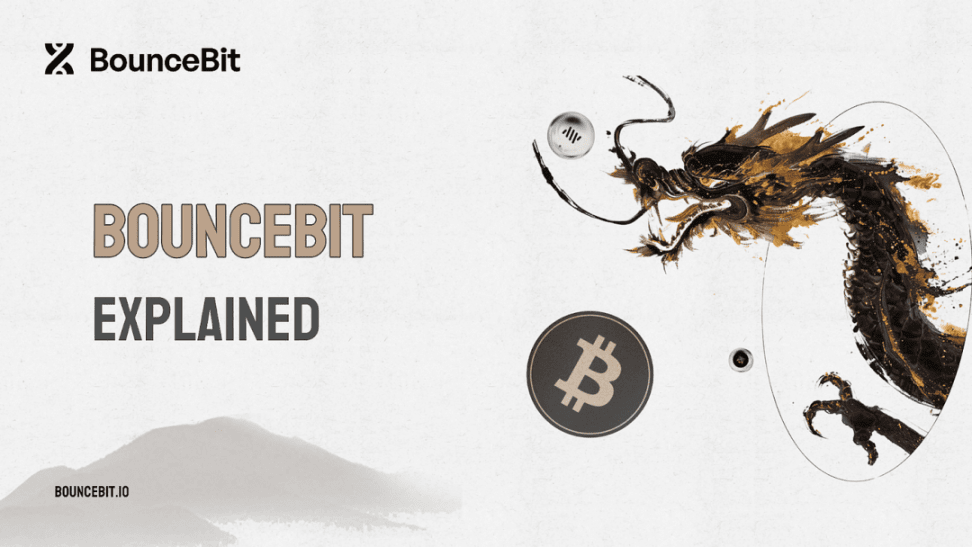
While Bitcoin holders are still looking for yield outlets for idle assets, a project called BounceBit is attempting to break the deadlock with a disruptive solution. As the first layer BTC staking chain to adopt a dual-token PoS mechanism, what new tricks is it playing?
A new paradigm of yield under the CeDeFi framework
BounceBit's core competitiveness lies in its innovative CeFi+DeFi hybrid architecture. Unlike traditional Bitcoin staking solutions, it ensures asset security through regulated custodial services (Ceffu, Mainnet Digital, and Fireblocks), while generating liquid staking certificates bounceBTC (BBTC) pegged to BTC. This design allows users to enjoy institutional-level risk control while delegating BBTC to node operators to obtain stBTC staking certificates, thereby participating in re-staking across sidechains, bridges, and other shared security clients—essentially allowing Bitcoin to 'fight on multiple yield fronts.'
What is even more noteworthy is its collaboration with traditional financial giants such as BlackRock and Franklin Templeton. Through BounceBit Prime, users can directly invest in tokenized real-world assets (RWA), a compliant yield channel that is a significant advancement in the current staking ecosystem dominated by native crypto assets.
Dual-token PoS: A dual game of security and liquidity
BounceBit's pioneering dual-token PoS mechanism has completely reconstructed the network consensus logic. Validator nodes simultaneously accept BBTC and BB token staking, bringing threefold advantages:
1. Directly injects the market value potential of Bitcoin into the network security system, allowing BTC holders to deeply participate in PoS chain governance for the first time.
2. The BB token, as the native governance token, creates value capture scenarios that are independent of BTC price fluctuations.
3. In the initial validator setup, BTC and BB tokens each account for 50% of the weight, forming a dynamic balance.
The actual effect of this hybrid model is thought-provoking—while most PoS chains are still struggling with the 'oligarchic staking' issue, BounceBit, by introducing the Bitcoin holder community, has effectively built a more decentralized power structure.
Liquid Custody: Unlocking the liquidity deadlock of staking assets
"Staking equals locking" has been a common issue in the industry, while BounceBit's Liquid Custody solution offers a new interpretation. After users deposit assets, they receive a 1:1 pegged token LCT, which retains the security of custody while allowing free participation in DeFi portfolio strategies. This design directly addresses the biggest pain point in the staking track: capital efficiency.
Real-world testing data shows that by bridging LCT to the BounceBit network, users can leverage BounceClub's no-code DeFi application store. Imagine a Bitcoin holder being able to earn staking yields while participating in liquidity mining without sacrificing custodial security—this composite yield scenario is something traditional finance struggles to achieve.
The breakthrough path of token economics
The incentive design of BounceBit is equally intriguing. Its $100,000 creator incentive program adopts a 'top-tier incentives + inclusive distribution' model: the top 300 content creators share 70% of the reward pool, while the remaining qualified participants share 30%. This structure stimulates the production of high-quality content while avoiding the Matthew effect in the community ecosystem.
From a broader perspective, the value support of the BB token comes from three dimensions: as a fundamental utility for network gas fees, the political value of governance voting rights, and the security premium in the dual-staking system. Especially after the approval of Bitcoin ETFs, when a large amount of institutional funds seek on-chain yield outlets, BounceBit's solution, which balances compliance and capital efficiency, is likely to become the preferred channel for large funds to enter.
According to Tang Hua, BounceBit's true ambition lies in reconstructing the value flow paradigm of Bitcoin. While other projects are still competing within the Layer 2 track, it has directly opened up the meridians between BTC and DeFi with a Layer 1 solution. This strategy of 'using Bitcoin's security foundation to play Ethereum's financial Lego' may be the embryonic form of the next-generation blockchain infrastructure.
Data does not lie: as of the time of writing, over 23,000 BTC have participated in staking through this protocol, with the number of verification nodes maintaining a compound growth of 15% weekly. Behind these numbers is a positive feedback loop that is forming—more stakers lead to higher network security, greater security attracts more developers, and rich applications further feed back into staking demand. This quiet financialization experiment with Bitcoin may go further than the market expected.


